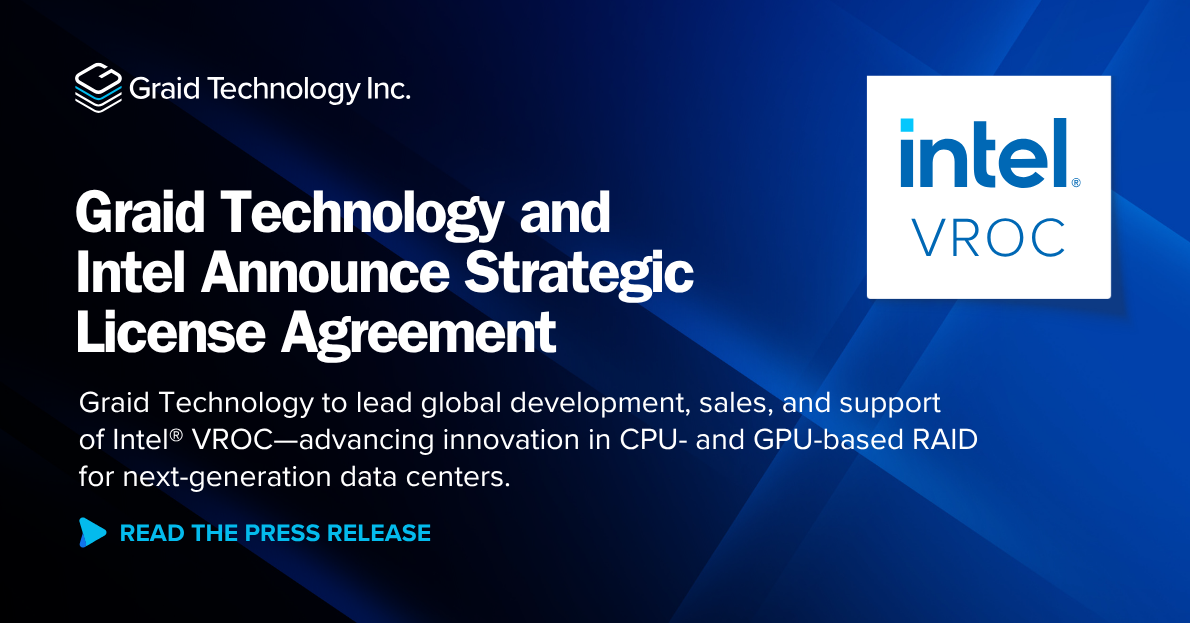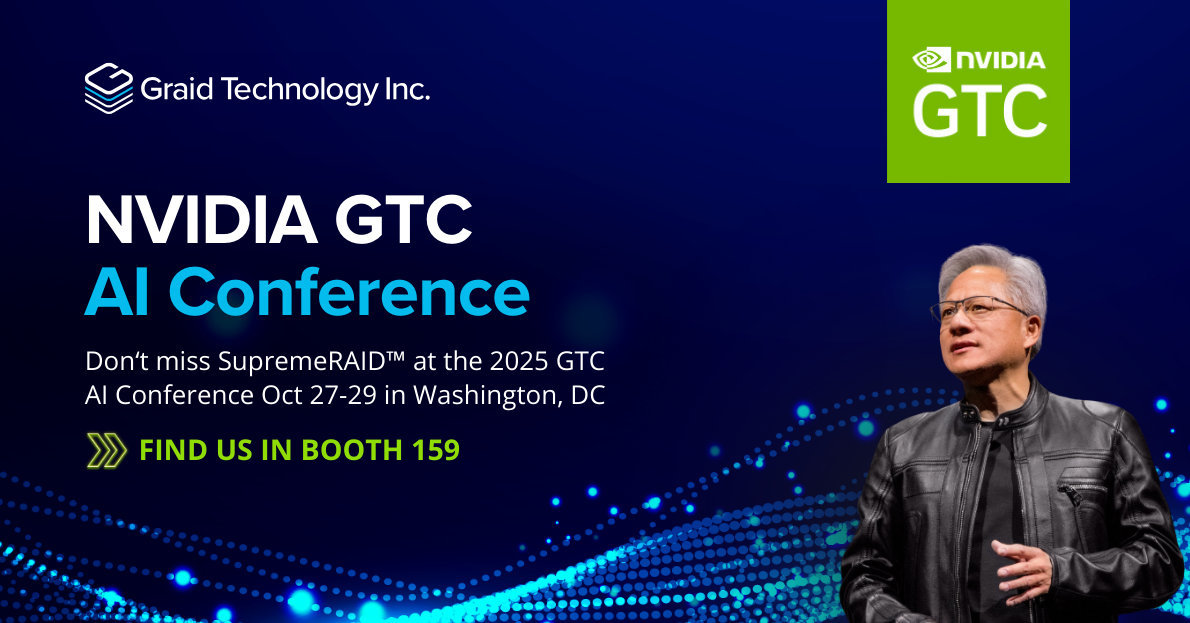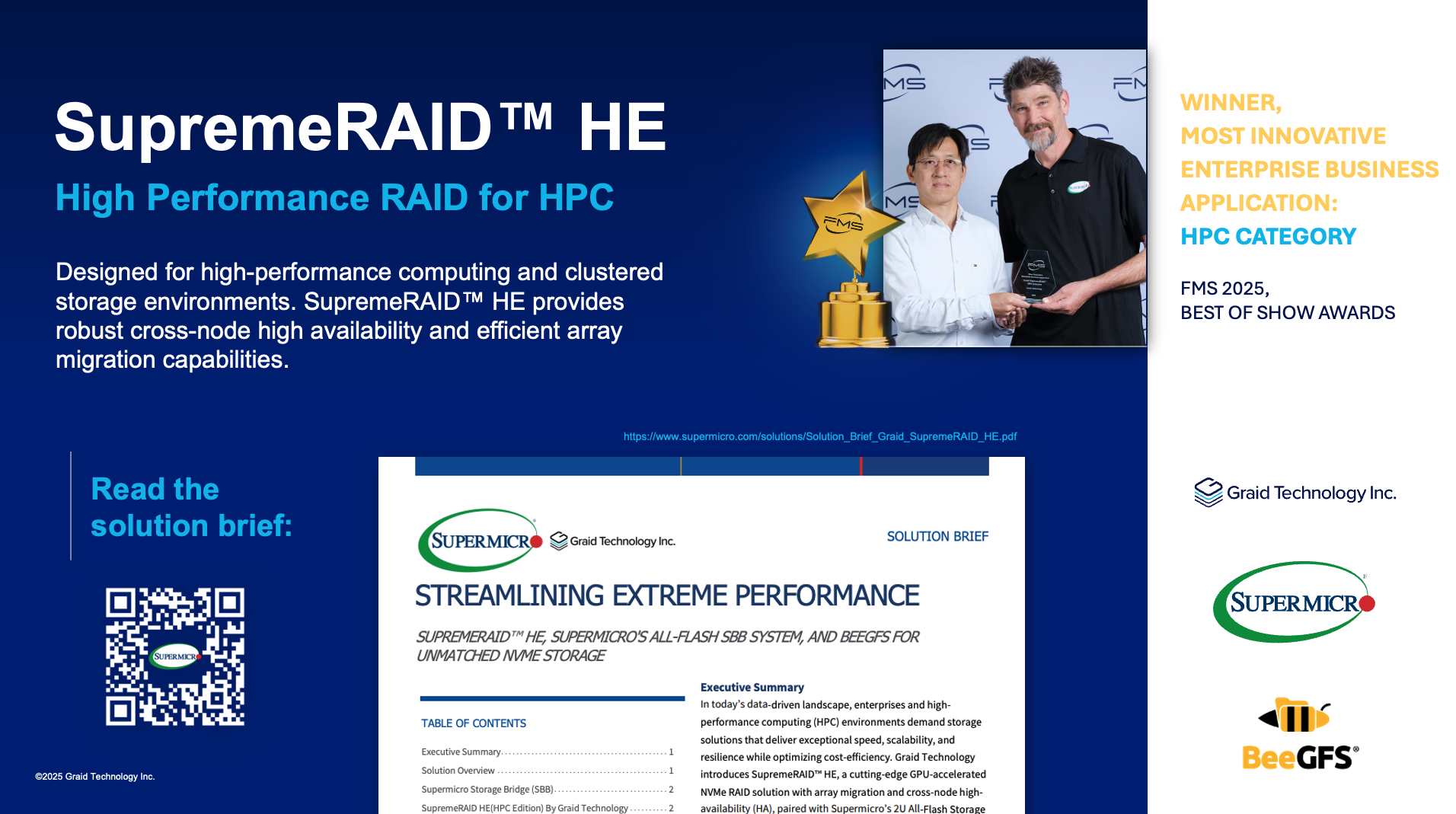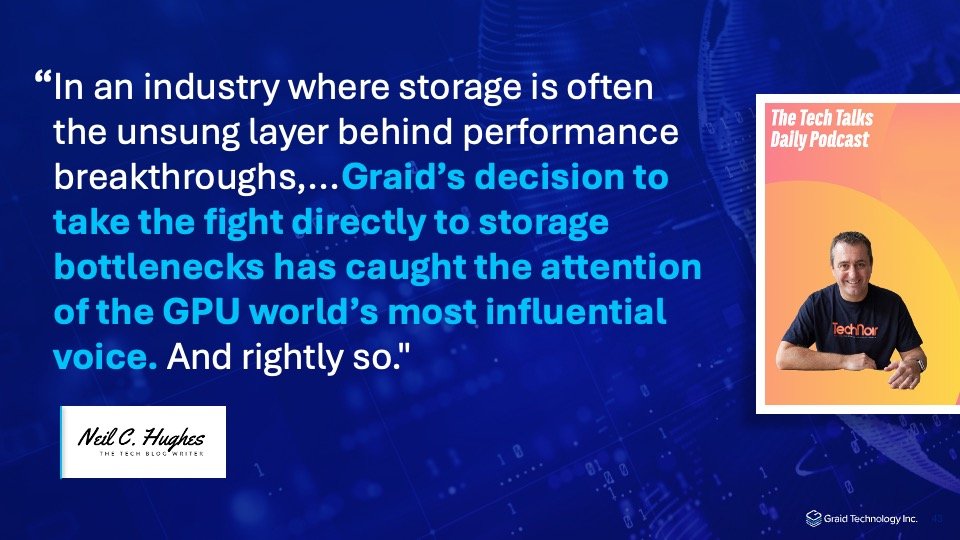
Is Storage the Real Bottleneck in AI? Graid Technology Thinks So
What if the real performance killer in your AI pipeline isn’t the model, the GPU, or the cloud architecture, but your RAID card?
Published in TechBlogWriter, UK / Neil C. Hughes
At IT Press Tour #62 in Silicon Valley, I met the team behind Graid Technology. This company has quietly but confidently redefined what RAID can be in the age of GPU computing and data-intensive workloads. Their message is as ambitious as it is grounded: it’s time to remove storage as a bottleneck. And they’re doing it not with more SSDs but with a complete rethink of RAID.
Founded by a team with deep roots in software-defined storage and ASIC design, Graid has developed SupremeRAID. This GPU-accelerated RAID solution eliminates the need for the CPU and offloads RAID operations directly to the GPU. The result is a significant performance boost in environments that rely heavily on input-output, from AI training clusters and real-time analytics to video production workstations and high-frequency trading platforms.
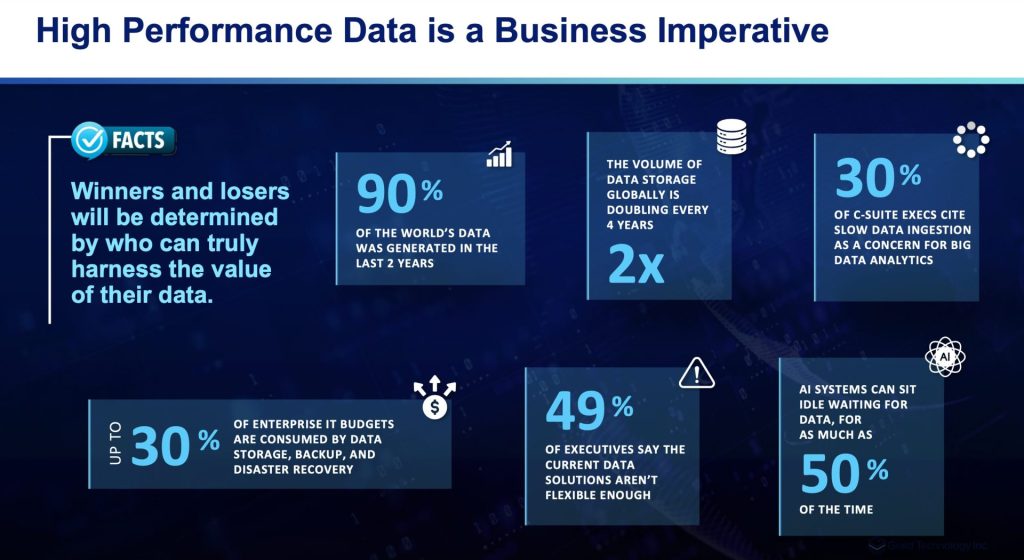
The GPU Is the New RAID Controller
Traditionally, RAID is handled either by CPU cycles or dedicated hardware controllers, both of which introduce latency and steal performance from higher-priority tasks. Graid’s approach is strikingly different. SupremeRAID turns your existing GPU into the RAID engine, unleashing the full potential of NVMe SSDs and reclaiming CPU bandwidth for other compute-heavy processes.
On systems using NVIDIA H100 GPUs, Graid demonstrated RAID performance that consumes just six SMs (streaming multiprocessors) per card, allowing the remaining capacity to focus entirely on inference or training.
In benchmark tests, SupremeRAID AE achieved 104 GiB per second read and 43 GiB per second write speeds in RAID 5 configurations with nine Samsung PM1743 NVMe drives. Those numbers are eye-opening when you consider they include complete RAID data protection, not raw drive performance.
Data Is the New Oil, and the Pipeline Is Broken
During the briefing, Graid’s leadership laid out a set of statistics that are hard to ignore:
- 90 percent of the world’s data has been created in just the past two years
- AI systems can sit idle up to 50 percent of the time waiting for data
- 30 percent of C-level executives cite slow data ingestion as a blocker to effective analytics
- 2x growth in global data storage volume every four years
- Up to 49 percent of executives say current data solutions are not flexible enough
These stats support Graid’s core assertion that storage is no longer an IT afterthought. It is central to whether AI and high-performance computing deliver measurable business value.
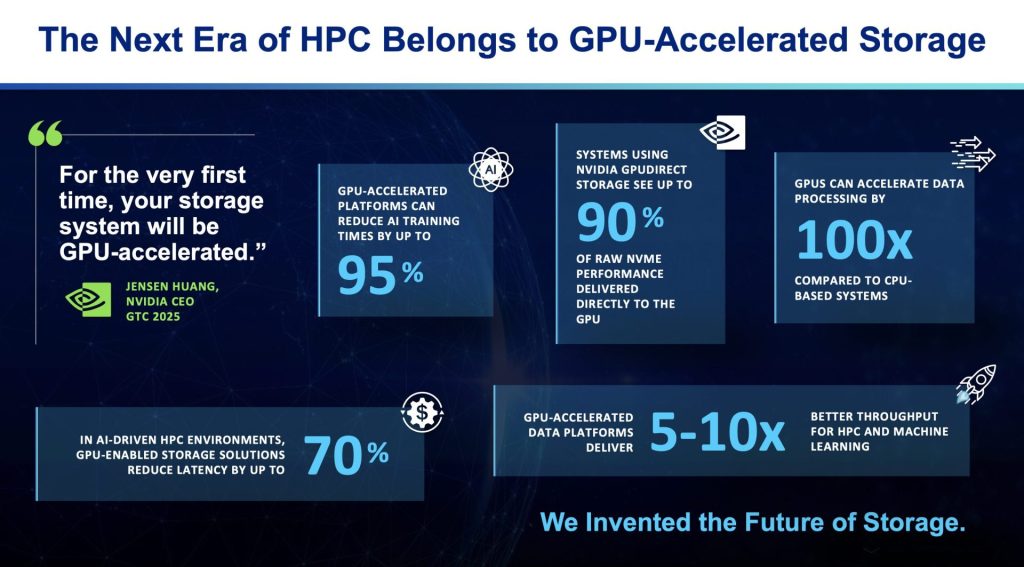
As one of their slides put it, winners and losers will be determined by who can truly harness the value of their data. Graid is betting that to win, you need to start by rebuilding your data pipeline from the RAID up.
It’s Not Just About Speed, It’s About Usability
While SupremeRAID is undeniably fast, Graid is also aiming for broad usability. Their product roadmap spans edge devices, desktops, and full-scale HPC installations. The newly announced SupremeRAID SE targets post-production teams, engineers, and designers with a bring-your-own-GPU model that supports up to eight NVMe SSDs. It is a software RAID solution designed for simplicity and performance without requiring dedicated hardware.
The SE version is currently in beta and aims to appeal to professionals who want RAID-level resilience and performance without getting locked into proprietary storage systems. It is designed to work with popular GPUs such as the NVIDIA RTX A400 and A1000, which opens the door to affordable high-performance storage for a new segment of users.
On the enterprise side, Graid has already earned validation from Dell Technologies. SupremeRAID is now available via Dell’s PowerEdge server configurator, marking a significant nod of credibility from one of the largest OEMs in the business.
From Silicon Valley to Jensen Huang’s Desk
The most telling anecdote came from the team at Graid who revealed that an article from a previous IT Press Tour had been presented to NVIDIA’s leadership. In their own words:
You all went away and published a whole bunch of articles, and one of them happened to land on Jensen’s desk. He read it and said, ‘What is this?’ And he got some of his people and said, go figure out what this is, and figure out what we do, what we need to do to help these guys be successful. Because this is unique.
In an industry where storage is often the unsung layer behind performance breakthroughs, that moment felt symbolic. Graid’s decision to take the fight directly to storage bottlenecks has caught the attention of the GPU world’s most influential voice. And rightly so.
As more companies build infrastructure around NVIDIA’s software stack, GPUDirect Storage, BaM, SCADA, and other solutions, such as SupremeRAID, become enablers for the next generation of data-intensive applications.
Real-World Impact Across Industries
The company showcased multiple customer success stories spanning various industries, including aerospace, cybersecurity, finance, and healthcare.
In one deployment with Novatech, SupremeRAID was utilized to power a 178TB system for AI-driven financial modeling, featuring RAID 6 resilience. In another instance, the University of Southampton accelerated 3D imaging workflows by eliminating storage-induced delays, achieving sequential write speeds of 20 GB per second.
Cybersecurity firm Sertrix also shared that their SupremeRAID deployment enabled over 2.6 million IOPS and drastically reduced CPU usage while supporting more than 150 Hyper-V instances. Even the US Department of Defense is using Graid’s solution in edge deployments to process classified data securely and reliably under constrained hardware conditions.
These are not niche workloads. They represent the mainstream direction of where enterprise IT is headed—more data, greater speed, increased resilience, and fewer compromises.
What Comes Next?
Looking ahead, Graid is doubling down on innovation. The company is rolling out support for new PCIe generations, expanding to more Tier 1 OEMs, and releasing updated Linux and Windows software that increases drive capacity limits.
As one of their final slides put it: “If you want to go fast, go alone. If you want to go far, go together.” Graid seems ready to do both.
I will be speaking with the team at Graid on the Tech Talks Daily Podcast in the next few weeks. If you have any questions you would like me to ask, please let me know, and you can also be a part of the conversation.

